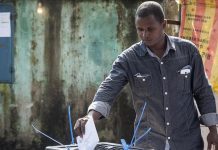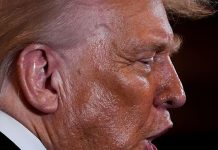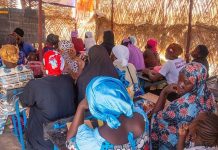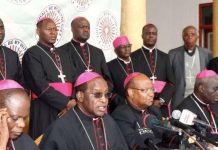Written by
Faridah n Kulumba
Africa-Press – Kenya. Kenya is preparing for general elections scheduled to take place in August 2022, but even a year ago the race to be the country’s next President was hotting up. The months leading up to, and after, elections have been the most violent periods in Kenya’s post-independence history, with thousands killed and hundreds displaced in election cycles since 2007.
The advent of multi-party democracy in Kenya in 1992 led to the ethnicisation of politics, with parties coalescing around tribal power-brokers and an ever-changing political landscape as inter-ethnic alliances were formed and fell apart.
This continues to characterise Kenya’s electoral landscape today. In the absence of parties based on a consistent political ideology, the instrumentalisation of tribal identities and manipulation of ethnic grievances remain the primary basis of political mobilisation, with the threat of violence-and often its use- hanging over every election cycle, by SafeWorld.
Kenyan elections
Until late 2007, Kenya was considered one of the most stable countries in Africa. It has functioned as East Africa’s financial and communications hub, the headquarters of many international nongovernmental organisations, and a magnet for tourism.
An analysis made by Stephanie Hanson looked favorably upon its healthy and broad based economic expansion under Mwai Kabaki, which stood in marked contrast to the growth of countries such as Angola and Equatorial Guinea that depend on the export of a single commodity oil. Yet disputed elections in late December 2007 spurred outbreaks of violence across the country that killed more than 600 people. Experts say that Kenyan weak institutions do not inherit ethnic divisions- are at the root of the current political crisis.
Shifts in the political narrative from inter-ethnic to inter-class competition
A new political dynamic seems to be emerging in Kenya, triggered by Covid and its impact, but underpinned by decades of socio-economic inequality. It is based on the fact that successive Kenyan political leaders whether in State House or Opposition have come from a handful of families, and it re-frames the contest away from one of ethnic identities and alliances towards one of the downtrodden masses against the elites. It is often characterized as a contest between ‘hustlers’ – Kenya’s vast underclass typically working in the informal economy – and the ‘dynasties’ of the Kenyattas, Odingas and other political families.
International interests
Kenyan elections are such-stakes affairs, political candidates are accustomed to hiring groups of young armed men to protect their interests. Each poll since the introduction of multiparty elections in 1992, 1997 and 2002 has been accompanied by low-level outbreaks of violence. Most experts trace this violence back to tactics that President Dabiel Arap Moi, who led the country from 1978 until 2002, used to divide tha population and retain political power. When Western donors compelled Moi to institute multiparty politics, his reaction was to make a prophecy that it would end in ethnic violence.
According to the director of the AfricanStudies Center at OxfordDavid Anderson, he said while there was not a history of ethnic violence under British rule, colonial officials fosted divisions among Kenya’s ethnic groups to prevent them from uniting against their rulers.
Kenya joined the United Nations at Independence in 1963, and is a member of 15 UN organisations and 22other international organisations. In addition to that, many big nations have strong ties with Kenya.
Kenya’s most significant ally in the West is Great Britain, The two nations have maintained their relations since independence. Britain remains Kenya’s principal trading partner, its source of economic and military assistance and its major provider of private investment capital. The British government has traditionally practiced “quiet diplomacy” with Kenya, a policy it considers to bring about the greatest influence on Kenya.
The relations between Kenya and the United States, improved since Oginga Odinga’s fall in 1980, Kenya anS signed an agreement to permit the American military to use Kenyan sea and air bases in exchange for economic and military assistance. The US presence in Kenya now consists of over 5,000 American citizens.
An active USAID and Peace Corps program in Kenya has further increased this presence as have growing American business interests. Over 125 US firms are represented in Kenya, bringing in an investment of over $200 million.
But most experts see a limited role for international actors such as the United States and the European Union in Kenya’s political future. Despite recent turmoil, the country has a vibrant media, a thriving civil society, and an economy that prior to the election crisis was on the upswing.
Kenyan Foreign Policy
Kenyan Foreign Policy provides a broad framework on Kenya’s foreign relations and diplomatic engagements within a contemporary globalized environment.The policy further outlines the evolution Kenyan foreign relations and engagements with their partners.
The Vision driving Kenya’s Foreign policy agenda is the pursuit of ‘A peaceful, prosperous and globally competitive Kenya’ while the Mission is “To project, promote and protect Kenya’s interests and image globally through innovative diplomacy, and contribute towards a just peaceful and equitable world”.






